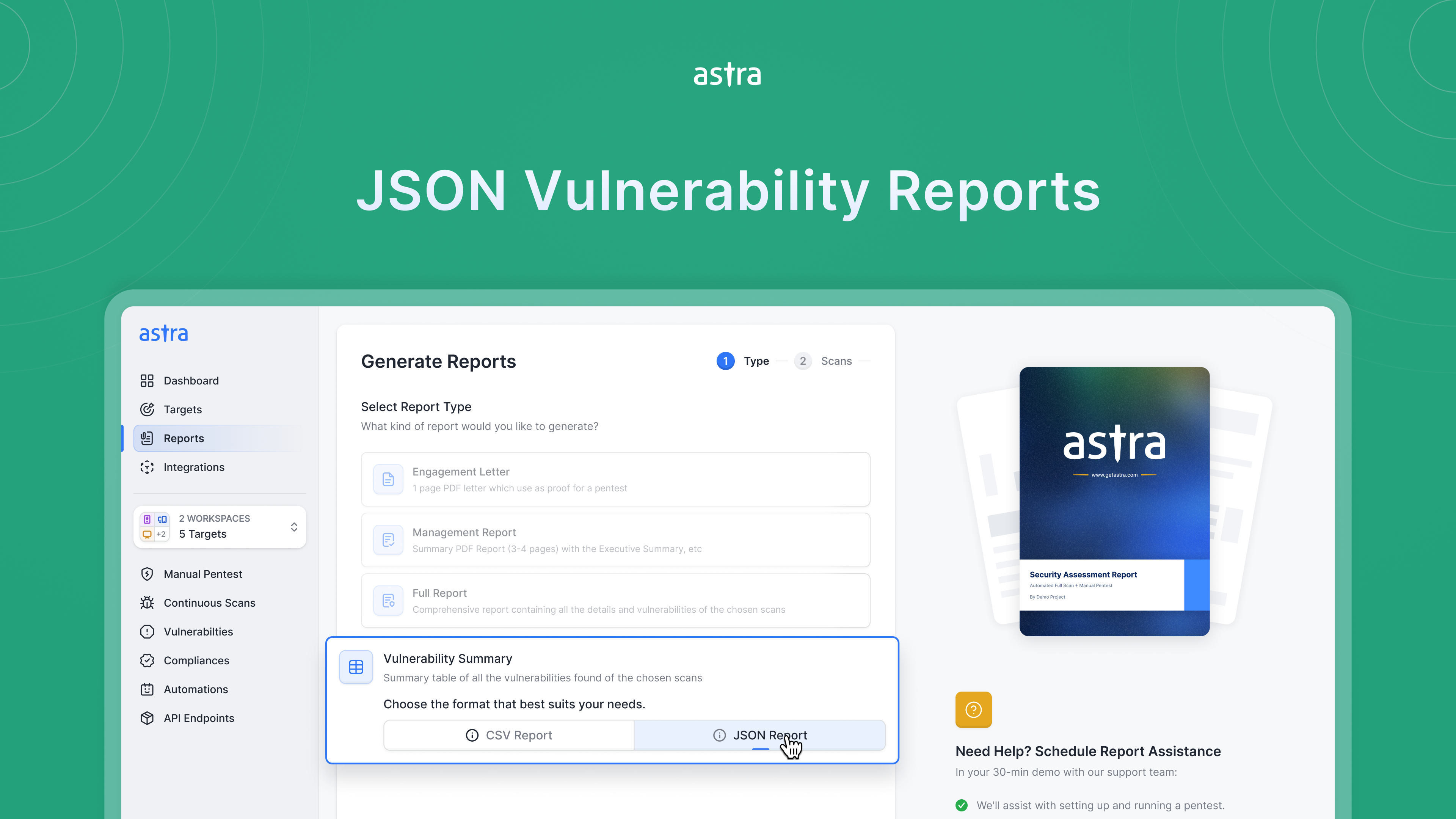May 13th, 2025
New
Improved
Fixed

JSON Vulnerability Reports, JIRA Quick Access & Critical Bug Fixes
This update introduces a powerful new reporting feature, key usability enhancements, and important bug fixes to streamline your scanning and vulnerability management workflows.
New Feature:
JSON Vulnerability Reports – You can now export vulnerabilities as JSON reports for one or more scans, making it easier to integrate data with internal tools or security platforms. P
Navigate to Reports > Select Vulnerability Summary Report Type (previously CSV report type) > Select JSON Report > Select your scans, and hit Export.
This new report format provides a machine-readable structure, enabling automation and data import into your existing security systems.
Read more about different reports type you can generate from OrbitX platform here.
Improvements:
Streamlined Vulnerabilities Page – The Vulnerabilities page has been revamped for a smoother experience, faster load times, and improved filtering and pagination. You can now customize your view using the Manage Views option to display only the columns you need
Enhanced Scan Visibility – The Scan in Progress widget now includes ETA and column headers, providing a clearer view of ongoing scans and their expected completion time.
Quick JIRA Access – Manage vulnerability tickets effortlessly with a new JIRA button that lets you open or create JIRA tickets directly from the vulnerability table (visible only for users with JIRA integration enabled).
Role Update Confirmation – After updating member roles, a confirmation toast now appears, ensuring you’re notified of the successful change.
Target Type Filtering in Reports – You can now sort and view reports based on asset type using the new Target Type filter, making it easier to locate specific scan data.
Bug Fixes:
Streamlined Cloud Target Setup – The programmatic access step has been removed for Digital Ocean and other cloud targets where it is not applicable, reducing unnecessary steps.
Accurate Vulnerability States After Rescan – Fixed an issue where vulnerabilities appeared in Under Review state after a rescan completion. Now, vulnerability states change to Solved or other states, accurately across scans.
Fixed Automated Rescan Trigger – Starting a manual rescan no longer incorrectly triggers automated rescans for other targets, preventing unintended scans.
Save Button Issue– The Save button now activates correctly after adding cloud target credentials, ensuring seamless workflow continuity.
Scan Filter Bug Fix – Resolved an issue where the scan filter wasn’t displaying scans for selected targets on the vulnerabilities page, restoring expected filter functionality.
Under Review Exclusion in Automated Rescans – Automated rescans now exclude vulnerabilities marked as Under Review, maintaining consistency with manual rescans.